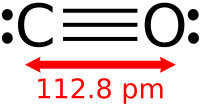
Photo from wikipedia
Formic acid (HCOOH) concentrations are often underestimated by models and its chemistry is highly uncertain. HCOOH is, however, among the most abundant atmospheric volatile organic compounds and it is potentially… Click to show full abstract
Formic acid (HCOOH) concentrations are often underestimated by models and its chemistry is highly uncertain. HCOOH is, however, among the most abundant atmospheric volatile organic compounds and it is potentially responsible for rain acidity in remote areas. HCOOH data from the Infrared Atmospheric Sounding Interferometer (IASI) are analyzed from 2008 to 2014, to estimate enhancement ratios from biomass burning emissions over seven regions. Fire-affected HCOOH and CO total columns are defined by combining total columns from IASI, geographic location of the fires from MODerate resolution Imaging Spectroradiometer (MODIS) and the surface wind speed field from the European Centre for Medium-Range Weather Forecasts (ECMWF). Robust correlations are found between these fire-affected HCOOH and CO total columns over the selected biomass burning regions, allowing the calculation of enhancement ratios equal to 7.30 × 10 −3 ± 0.08 × 10 −3 mol/mol over Amazonia, 11.10 × 10 −3 ± 1.37 × 10 −3 mol/mol over Australia, 6.80 × 10 −3 ± 0.44 × 10 −3 mol/mol over India, 5.80 × 10 −3 ± 0.15 × 10 −3 mol/mol over Southern East Asia, 4.00 × 10 −3 ± 0.19 × 10 −3 mol/mol over Northern Africa, 5.00 × 10 −3 ± 0.13 × 10 −3 mol/mol over Southern Africa, and 4.40 × 10 −3 ± 0.09 × 10 −3 mol/mol over Siberia, in a fair agreement with previous studies. The comparison with other studies highlights a possible underestimation by 60 % of emission or a secondary production of HCOOH by Siberian forest fires while the studied fire plumes originating from Southern African savanna could suggest a limited secondary production of HCOOH or a limited sink. In comparison with data set characterizing emissions, it is also shown that the selected agricultural burning plumes captured by IASI over India and Southern East Asia correspond to recent plumes where the chemistry or the sink do not occur.
Journal Title: Atmospheric Chemistry and Physics
Year Published: 2017
Link to full text (if available)
Share on Social Media: Sign Up to like & get
recommendations!